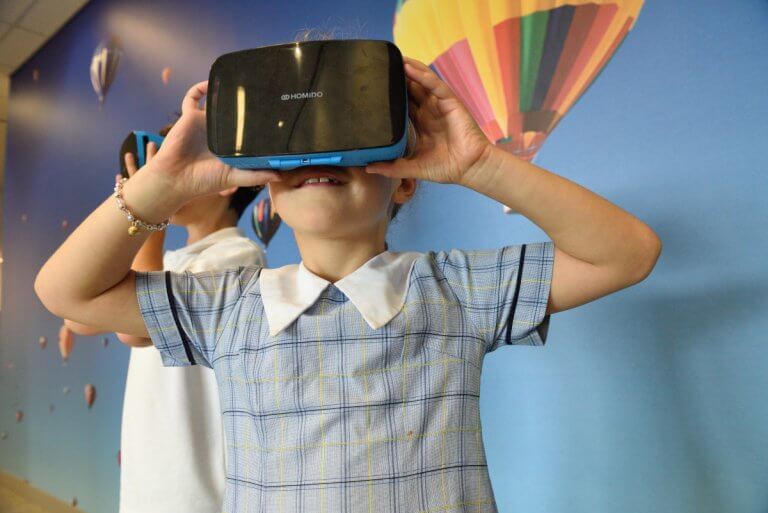
While research into Holoportation technology by tech giants like Microsoft is ongoing, it has consistently sparked interest and discussion in the global education sector.
Defined by Microsoft as a new type of 3D capture technology that allows high-quality 3D models of people to be reconstructed, compressed and transmitted anywhere in the world in real-time, it’s an immersive and innovative form of tech that could permanently transform classroom environments.
What is Holoportation technology?
As displayed in the video above, this type of tech allows you to see, hear and interact with remote participants in 3D as if they are actually present in the same physical space.
When implemented in learning environments, different schools can interact and experience the same lessons together, and students may even be able to attend lessons from the comfort of their homes.
The advantages of using Holoportation technology in schools
Many schools are finding ways to create integrated learning spaces influenced by the concept of Holoportation.
For example, Wooranna Park Primary School in Dandenong North, Australia, has created a virtual classroom through Minecraft.
Inspired by the prospect of holoportation, Wooranna Educational Technologist Kieran Nolann notes that “Students can be in a virtual space in real-time and collaborate/connect with other schools around the world.
“Once we had a few cultural exchanges with students in Boston and Colorado, we built the historical landmark of Dandenong Market via Minecraft, and the students from the US toured our creation while we toured theirs. To do this, my class researched the history of it and built it to scale. So, the use of VR, AR and immersive tech has really switched up our lessons and ignited student engagement!”
Using a professional VR headset and enhanced Holoportation technology, school learners may one day get to explore other schools around the world or take a school trip to famous landmarks without having to ask their parents for permission or or having to cough up hefty transport and accommodation fees.
Holoportation literally breaks down the walls of learning, transporting students into new dimensions.
The drawbacks of using Holoportation technology in schools
As amazing as it sounds, there will no doubt be drawbacks to Holoportation in schools.
Safety is one huge factor that springs to educators’ minds. Virtually ‘teleporting’ anyone to any location in real-time could be dangerous if it’s just one single student venturing to a destination alone.
Even though they are not physically at that location, teachers must monitor the activity and ensure the technology is positively benefiting students’ education and they’re not strolling into any ‘stranger danger’.
The price of Holoportation tech may also lead to issues.
Will already tight school budgets stretch to expensive tech?
What happens if the technology breaks and needs replacing?
High-quality equipment will come at a high cost. Before implementing these gadgets in schools, the effectiveness of the tools must be validated and assessed.
Lastly, the immersion of tech and education. Many educators may be against the full immersion of tech in classrooms and argue that children are becoming too dependent on gadgets.
This technology must be used wisely, and teachers must be careful that it doesn’t distract students or destruct the originality of lesson plans.
They’re now showing off #Holoportation pic.twitter.com/29mPKf9R5A
— Jeremiah Marble @ #MSBuild (@jeremiahmarble) May 6, 2019
Liked this? Then you’ll love…
Is it safe to use voice assistant technology in the classroom?
How schools can use technology to help students with disabilities







